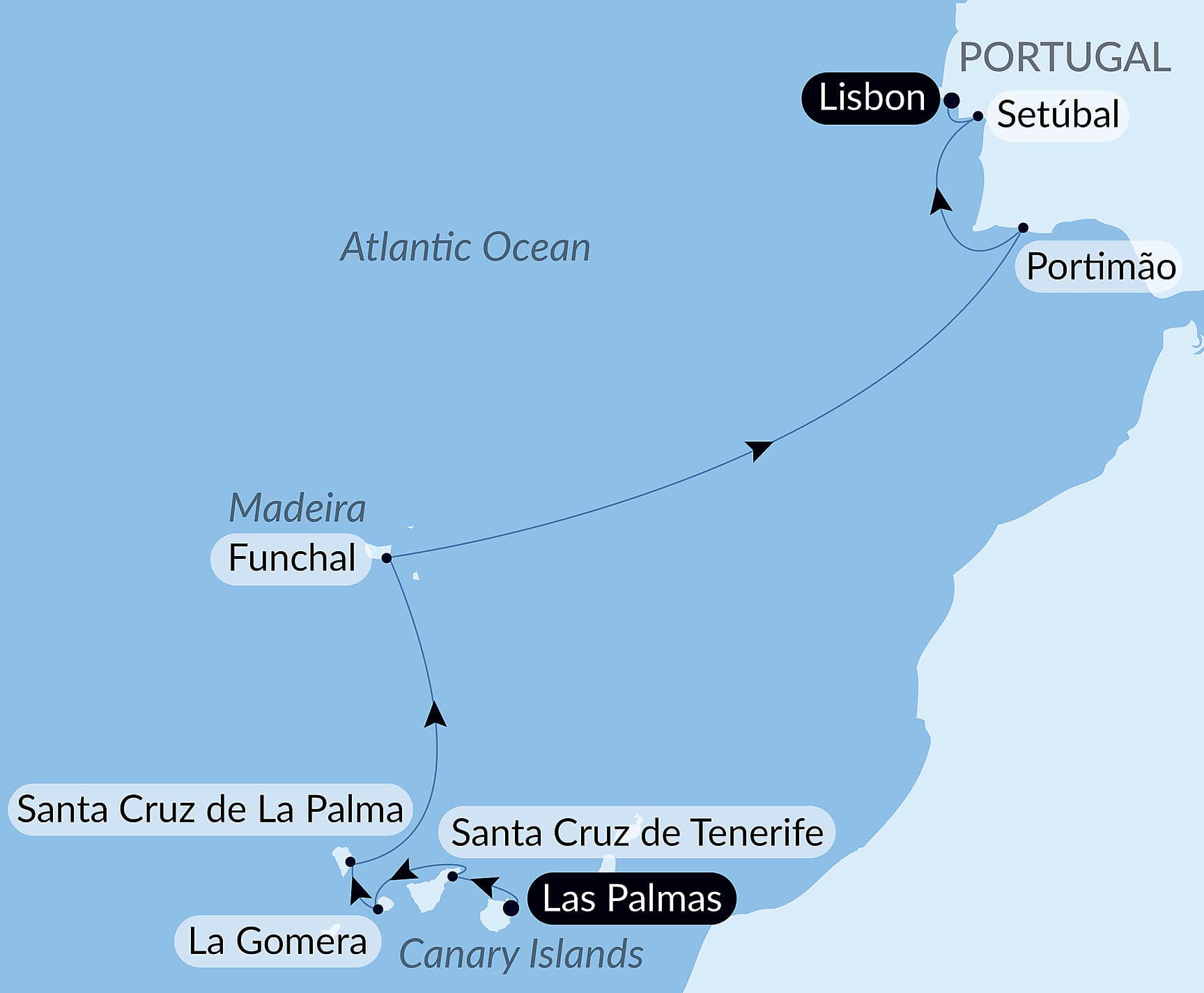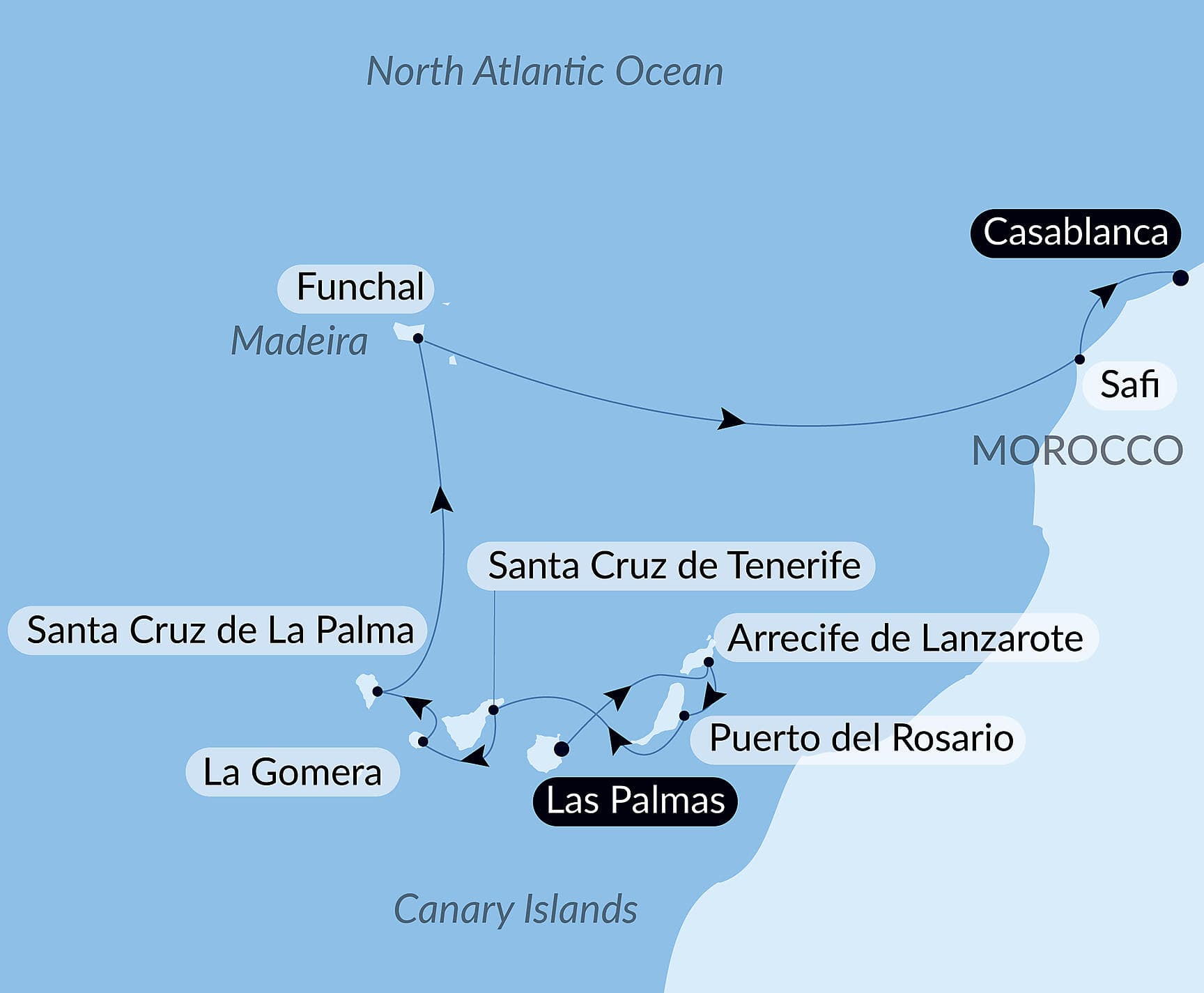The Canary Islands
Discover the destination
Why the Canary Islands?
11 cruises in Canaries
From
Las Palmas de Gran Canaria, Canary Islands (Spain)
To
Las Palmas de Gran Canaria, Canary Islands (Spain)
7 nightsaboard the shipLe Bellot
Next departures
From
Dakar (Senegal)
To
Las Palmas de Gran Canaria, Canary Islands (Spain)
10 nightsaboard the shipLe Bougainville
Next departures
From
Las Palmas de Gran Canaria, Canary Islands (Spain)
To
Málaga (Spain)
8 nightsaboard the shipLe Bougainville
Next departure
From
Las Palmas de Gran Canaria, Canary Islands (Spain)
To
Lisbon (Portugal)
10 nightsaboard the shipL'Austral
Next departures
From
Las Palmas de Gran Canaria, Canary Islands (Spain)
To
Dakar (Senegal)
10 nightsaboard the shipLe Lapérouse
Next departures
From
Málaga (Spain)
To
Las Palmas de Gran Canaria, Canary Islands (Spain)
8 nightsaboard the shipLe Champlain
Next departures
From
Las Palmas de Gran Canaria, Canary Islands (Spain)
To
Casablanca (Morocco)
9 nightsaboard the shipLe Champlain
Next departure
From
Las Palmas de Gran Canaria, Canary Islands (Spain)
To
Málaga (Spain)
10 nightsaboard the shipLe Dumont d'Urville
Next departure
From
Las Palmas de Gran Canaria, Canary Islands (Spain)
To
Casablanca (Morocco)
10 nightsaboard the shipLe Boréal
Next departure
From
Santa Cruz de Tenerife, Canary Islands (Spain)
To
Lisbon (Portugal)
9 nightsaboard the shipLe Lapérouse
Next departure
Lisbon to the Canary Islands by Sea: Spain, Morocco, & Atlantic Isles – with Smithsonian Journeys
From
Lisbon (Portugal)
To
Las Palmas de Gran Canaria, Canary Islands (Spain)
13 nightsaboard the shipLe Lapérouse
Next departures
*Price is per person, based on double occupancy, based on availability, and subject to change at any time. The category of stateroom to which this price applies may no longer be available.
See all cruises to the Atlantic islands
Explore

More inspiration
Upcoming departures, new experiences, interviews, exploration or scouting stories... All brochures can be ordered or downloaded in digital format.



















